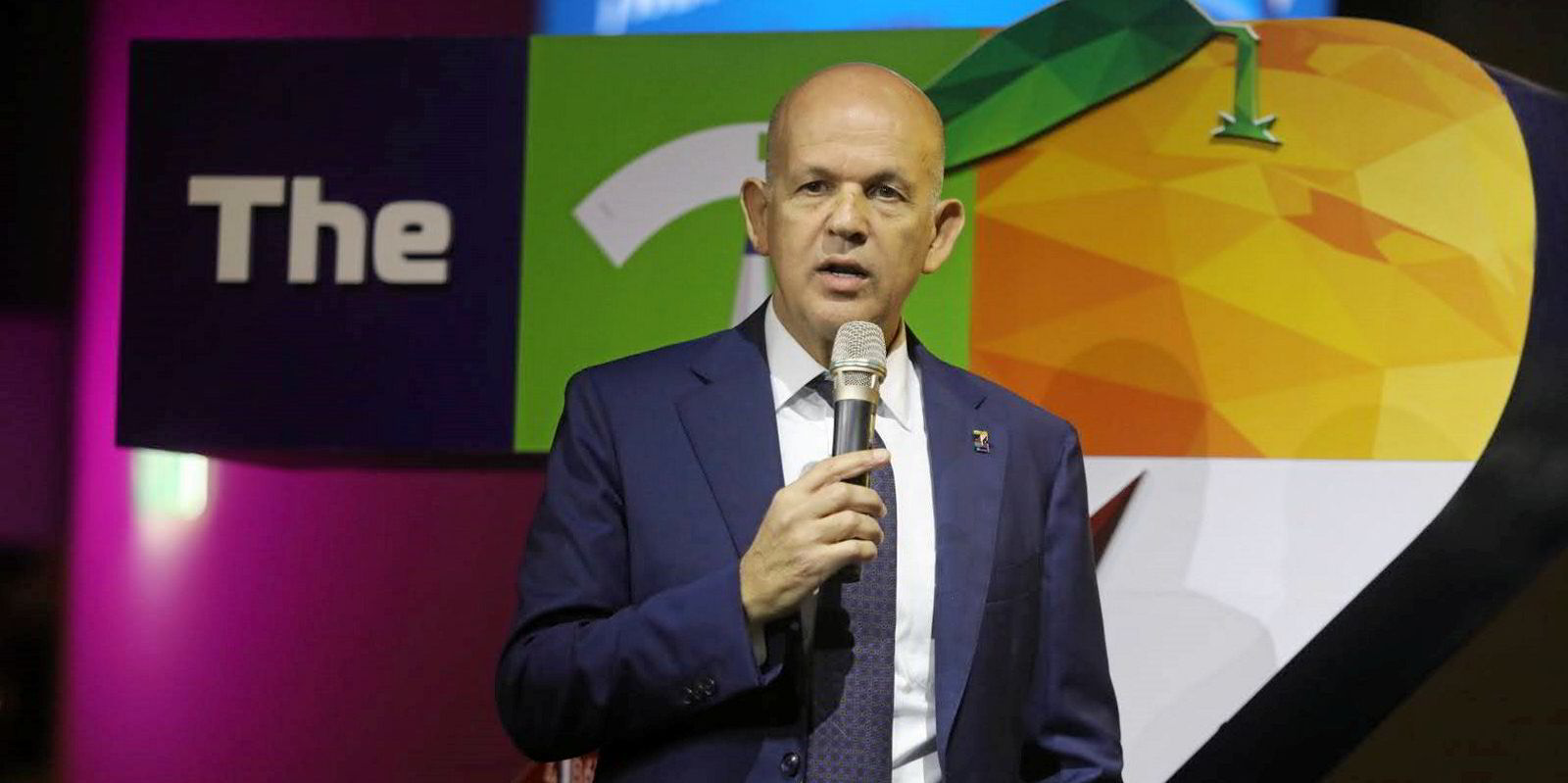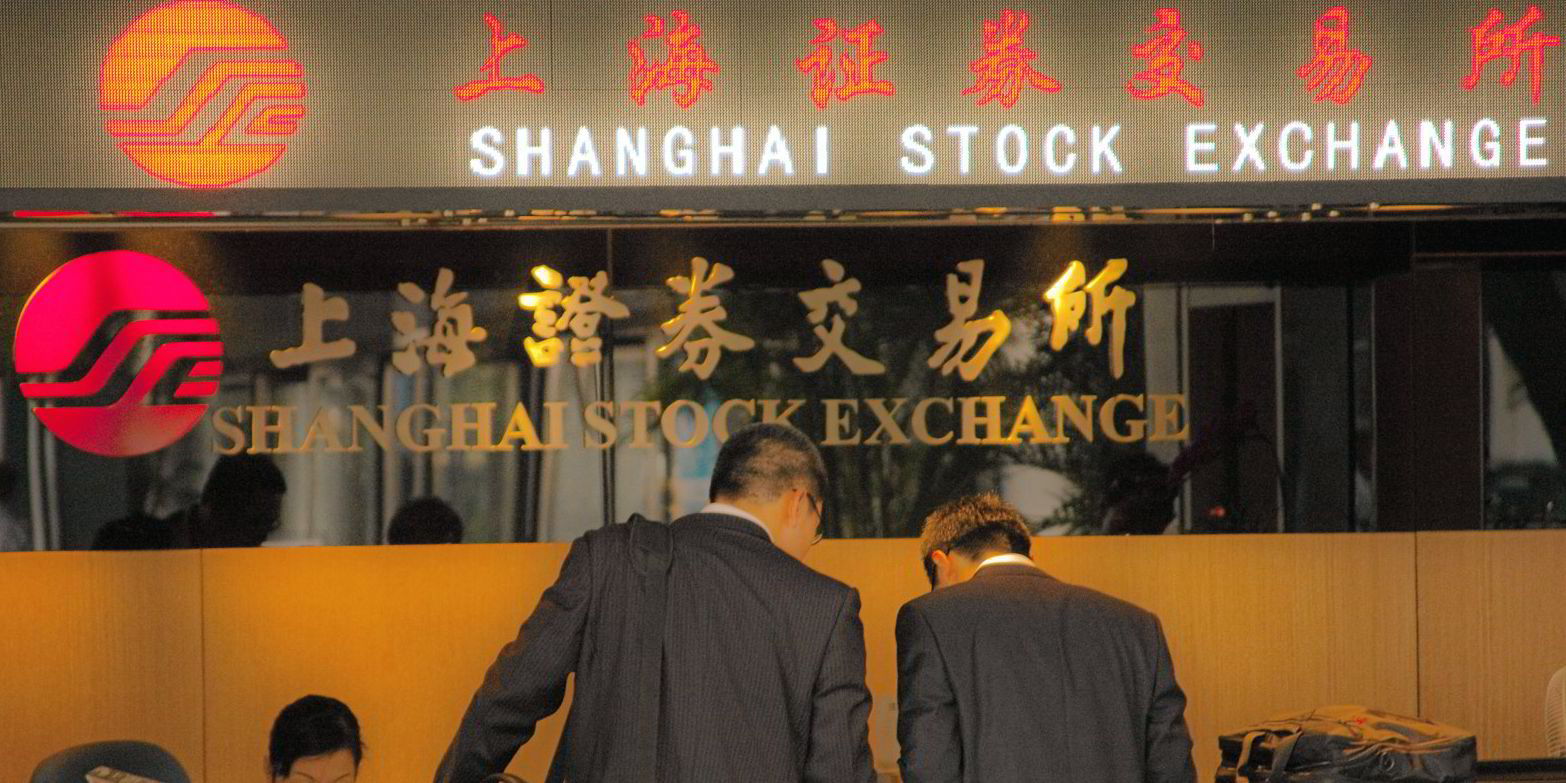CO2 emissions from container ships fell on 10 of the world’s busiest 13 freight lanes in the first quarter, benchmarking and analysis company Xeneta has revealed.
But it has cast doubt on how much of this is down to environmental commitments by owners and how much is a by-product of commercial necessity.
Xeneta’s Carbon Emissions Index (CEI), produced in tandem with Marine Benchmark, showed the US West Coast to Asia trade corridor made the biggest emissions inroads.
Taiwanese owner Yang Ming also emerged as the industry’s “emissions hero” for the second consecutive quarter.
The CEI is built on real-time AIS data and individual vessel specifications, allowing Xeneta to track and calculate environmental performance per tonne of cargo carried across the sector’s busiest routes.
It uses a baseline score of 100 to assess carriers in relation to the trade lane average at the start of 2018.
Xeneta shipping analyst Emily Stausboll said those scores showed quarterly improvements on many trades for the start of this year.
However, she added that there are doubts over whether this trend is “here to stay”, noting that it is perhaps not just environmental commitment that is lowering the CEI scores.
She believes much of the improvement is down to carriers reducing speeds, which delivers fuel-efficiency gains while allowing them to cater for much lower demand in a subdued macroeconomic climate.
The US West Coast to Asia backhaul run saw a speed reduction of almost one knot, which, when combined with an increase in vessel sizes and a stable filling factor, enabled an 11.3% CEI improvement from the fourth quarter of 2022.
Business considerations
Stausboll said: “We’re also seeing several alliances add capacity to services, for example when newbuilds are coming on line, and then slow down the speeds of deployed ships.
“This allows them to add the vessels without increasing capacity in real terms, due to the slower transit times. This strategy, it’s fair to say, is driven by business rather than environmental considerations.”
The analyst said global shippers looking to shrink the carbon footprints of their logistics chains will be delighted to see meaningful falls in emissions on key freight corridors.
“And, in the aftermath of MEPC 80 and the IMO’s accelerated greenhouse gas commitments, such improvements should certainly be applauded,” she said.
“But the question is: what happens when the market improves? Will we see commercial considerations trump environmental ones? Time will tell how committed individual carriers are here.”
Xeneta’s data shows only three trades increased speeds across the quarter, and all were fronthaul routes: Asia to North Europe and to the US East Coast, and North Europe to the US East Coast.
The only routes that had an increase in emissions were North Europe to Asia and the US East Coast, and the Mediterranean to the US East Coast.
Despite the favourable trend, four trades recorded worse CEI scores than in the first three months of 2018.
The Mediterranean to US East Coast trade was “bottom of the barrel” with a 13.6% higher CEI.
Asia to US East Coast came top with a 21.2% improvement over the period.
Yang Ming was the cleanest carrier on three trades, with Orient Overseas Container Line and HMM coming top on two trades each.
“Yang Ming was the only major carrier to score below the trade lane average on all the trades where it deployed ships,” Stausboll said. “It also sailed younger ships than the trade lane averages and, importantly, sailed slower.”





